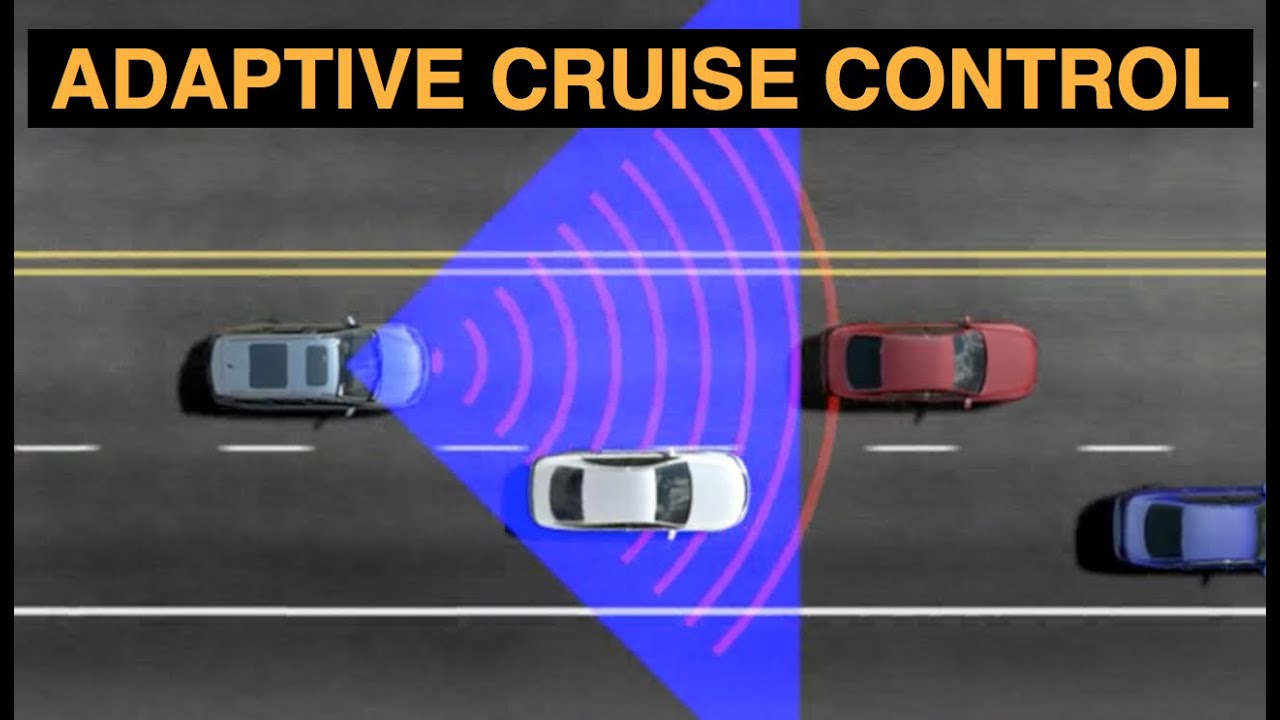
Introduction: Smarter Speed Control on the Road
Driving long distances can be tiring, especially when stuck in traffic or cruising on open highways. Traditional cruise control systems help by maintaining a set speed, but they have one limitation: they cannot react to changing traffic conditions.
Enter Adaptive Cruise Control (ACC) – a smarter, more intuitive version of cruise control that adjusts your speed based on the vehicle ahead. This revolutionary feature is one of the stepping stones toward autonomous driving cars and is now standard in many modern cars.
But what exactly is adaptive cruise control, and how does it work? Let’s break it down.
What Is Adaptive Cruise Control?
Adaptive Cruise Control, sometimes referred to as autonomous cruise control or adaptive cruise, is an advanced driver assistance system (ADAS) that automatically adjusts the speed of your cruise control vehicle based on the flow of traffic.
Unlike traditional cruise control, which maintains a fixed speed, adaptive cruise control systems use sensors, radar, and cameras to detect the vehicle in front of you. If that vehicle slows down, your car slows down, too. When the road clears, it returns to your preset speed without the driver needing to touch the brakes or accelerator.
This intelligent system is a significant step toward making driving safer, more efficient, and less stressful, especially during highway travel.
How Does the Adaptive Cruise Control System Work?
An adaptive cruise control system operates using a combination of onboard sensors and technology:
- Radar Sensors: Mounted on the front grille or bumper, radar detects the distance and speed of vehicles ahead.
- Cameras: Usually placed near the rearview mirror, cameras help identify vehicles, traffic signs, and road conditions.
- ECU (Electronic Control Unit): This processes sensor input and adjusts the throttle and brakes accordingly.
The system constantly monitors your surroundings and makes real-time adjustments, allowing your vehicle to maintain a safe distance from others.
Key Features Include:
- Set cruising speed
- Adjust the following distance
- Automatic slowing and acceleration
- Some systems can bring the vehicle to a complete stop and restart
This kind of intelligent speed regulation forms the core of autonomous cruise control systems used in semi-autonomous cars today.
The Role of Adaptive Cruise Control in Autonomous Vehicles
Adaptive cruise control plays a crucial role in the development of autonomous vehicles. It is one of the foundational technologies found in autonomous cars, bridging the gap between human and machine-driven mobility.
In fact, autonomous cruise control is often part of what’s called Level 1 or Level 2 autonomy, depending on the system’s capabilities. It can work independently or in conjunction with other autonomous driving technologies, such as lane-keeping assist and traffic jam assist.
When you ask, “What is an autonomous vehicle?“—you’re referring to a car that can drive itself with little or no human input. Adaptive cruise is a core feature that enables these cars to interpret and react to real-world traffic patterns, making it a key milestone toward full autonomy.
Types of Adaptive Cruise Control Systems
1. Conventional Adaptive Cruise Control
These systems adjust speed based on the vehicle in front but do not come to a complete stop. They’re best for highway driving.
2. Stop-and-Go Adaptive Cruise Control
These advanced systems can slow your car to a full stop and resume driving when traffic starts moving again. They are ideal for urban traffic and highway congestion.
3. Predictive Adaptive Cruise Control
Some newer systems use map data and GPS to predict curves or hills and adjust speed proactively for better comfort and fuel efficiency.
Benefits of Adaptive Cruise Control
Reduced Driver Fatigue
On long trips, adaptive cruise control eliminates the need to constantly adjust your speed, making the drive more relaxing.
Increased Road Safety
Maintaining a safe following distance helps reduce the risk of rear-end collisions, especially in sudden traffic changes.
Fuel Efficiency
Maintaining a consistent speed without unnecessary braking or accelerating improves fuel economy.
Path to Autonomy
As mentioned, adaptive cruise is a building block for more advanced autonomous driving technology, paving the way for future autonomous vehicles.
Limitations of Adaptive Cruise Control
Despite its benefits, there are some limitations to be aware of:
- Sensor Limitations: Heavy rain, snow, or fog can affect radar and camera performance.
- Not Fully Autonomous: Drivers must remain attentive and ready to take control.
- Curve Handling: Some systems may not handle sharp turns or winding roads effectively.
However, as autonomous cruise control systems evolve, AI-powered prediction and sensor fusion are addressing many of these issues.
Popular Vehicles with Adaptive Cruise Control
Today, most mid-range and premium vehicles offer adaptive cruise control systems as part of their safety package. Examples include:
- Toyota Corolla / Camry (Toyota Safety Sense)
- Honda CR-V / Accord (Honda Sensing)
- Ford Explorer (Co-Pilot360)
- Tesla Models (Autopilot)
- BMW 3 Series and above
- Audi A4, Q5, and higher
These systems often come bundled with other ADAS technologies, offering a near-autonomous driving experience under certain conditions.
Future of Adaptive Cruise Control
As autonomous driving technology progresses, we’re seeing adaptive cruise control integrated with other systems like:
- Lane-centering assist
- Driver monitoring
- V2X communication (vehicle-to-everything)
- AI-powered predictive algorithms
Eventually, these features will form the brain of autonomous cars, allowing them to navigate roads safely and intelligently without human intervention.
Conclusion: A Smart Step Toward Autonomous Driving
Adaptive cruise control is more than just a convenience—it’s an innovative safety feature and a critical part of the journey toward fully autonomous vehicles. By combining radar, cameras, and onboard intelligence, this technology is changing how we experience long drives and heavy traffic.
So, the next time you get into a car with an adaptive cruise, you’re not just using a luxury feature—you’re witnessing a part of the future of mobility in action.






